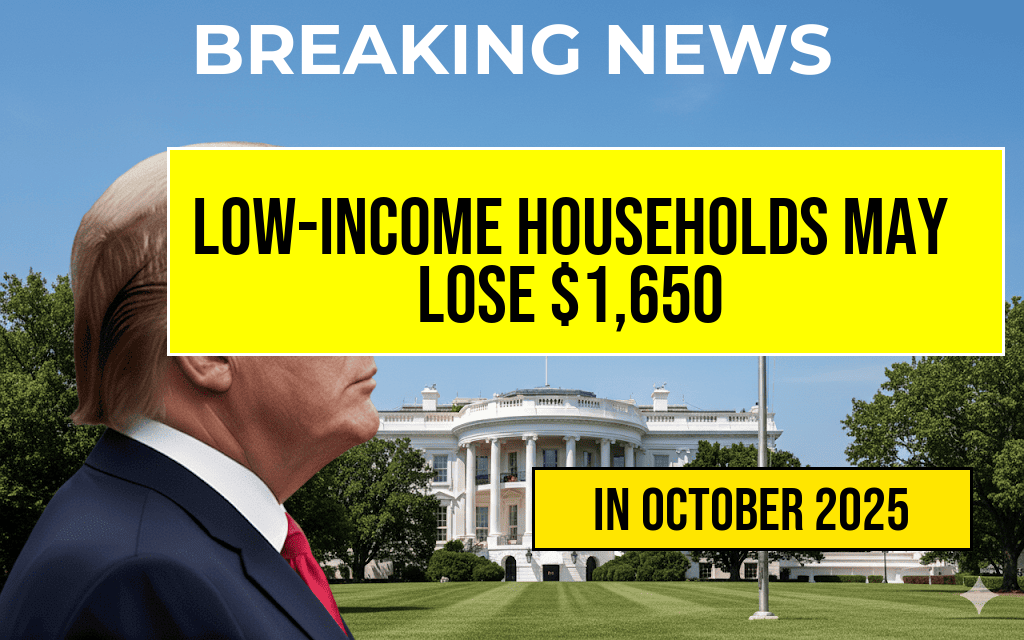Low-income households across the United States are bracing for significant financial impacts as new policy adjustments are set to reduce their income support, with potential losses reaching up to $1,650 annually. The changes, introduced by federal and state agencies, aim to streamline welfare programs and adjust eligibility criteria, but critics warn that these modifications could deepen economic hardships for vulnerable populations. According to recent analyses from economic experts and advocacy groups, households earning below the federal poverty line may see diminished benefits in key assistance programs, potentially forcing difficult choices on necessities such as housing, healthcare, and food. As policymakers defend the reforms as necessary for fiscal sustainability, affected families and community organizations are mobilizing to understand and mitigate the broader implications of these policy shifts.
Overview of the Policy Changes
The recent reforms primarily target income-based assistance programs, including Supplemental Nutrition Assistance Program (SNAP), Temporary Assistance for Needy Families (TANF), and housing subsidies. The modifications involve tightening eligibility criteria, implementing stricter income verification processes, and adjusting benefit calculations. Federal agencies argue that these changes are essential for reducing dependency and ensuring resources are directed toward those with the greatest need. However, the adjustments also mean that many low-income families will receive lower benefits or be disqualified altogether, leading to potential income reductions that could reach $1,650 annually for some households.
What Families Stand to Lose
| Household Income Level | Average Potential Reduction | Estimated Total Loss |
|---|---|---|
| Below 50% of Federal Poverty Level | $150 – $200 per month | $1,800 – $2,400 |
| Between 50% and 100% of Poverty Level | $75 – $125 per month | $900 – $1,500 |
For families at the lowest income tiers, these reductions could mean losing access to critical support networks. For example, a household relying on SNAP benefits might see monthly assistance drop by approximately $150, translating into an annual loss of nearly $1,800. Such reductions threaten to compromise their ability to afford nutritious food, potentially exacerbating health issues and food insecurity.
Impacts on Housing and Healthcare
Housing assistance programs are also undergoing restructuring, with eligibility thresholds becoming more stringent. Families previously qualifying for subsidized housing might now face reductions or loss of subsidies, increasing the risk of homelessness or overcrowding. Healthcare programs, including Medicaid, are not immune; some states have begun to tighten enrollment criteria, which could result in fewer low-income individuals qualifying for coverage. This combination of reduced income and diminished support services poses a serious threat to the stability of low-income households.
Community and Economic Effects
Beyond individual families, the policy shifts could have ripple effects on local economies. Reduced consumer spending by families with limited income can depress local businesses, especially in neighborhoods with high poverty rates. Social service organizations warn that diminished benefits may lead to increased demand for emergency assistance, food banks, and healthcare services, straining already stretched resources.
Responses from Advocacy Groups and Policymakers
Many advocacy organizations have voiced strong opposition, arguing that the policy changes disproportionately impact the most vulnerable populations. Food assistance advocates warn that the reductions could push millions into deeper poverty. Conversely, some policymakers defend the reforms, citing concerns over government spending and the need for fiscal responsibility amidst rising national debt.
Statistics and Projections
- Estimated households affected: Approximately 4 million low-income families nationwide
- Average benefit reduction: $100 – $200 per month per household
- Potential increase in poverty rate: Up to 1.5 percentage points
Looking Ahead
While the full impact of these policy revisions will unfold over the coming months, early indicators suggest increased hardship for families already struggling to make ends meet. Local governments and community organizations are calling for targeted relief measures and policy adjustments to mitigate the adverse effects. As debates continue over the balance between fiscal responsibility and social safety nets, low-income households remain at the center of the discussion, facing immediate financial challenges that could reshape their economic stability for years to come.
Frequently Asked Questions
What is the main impact of the new policy changes on low-income households?
The new policy changes could result in a reduction of income by up to $1,650 for low-income households, affecting their financial stability and ability to cover basic expenses.
Who is affected by these policy changes?
Low-income households across various regions are affected, particularly those already struggling to meet their essential needs such as housing, food, and healthcare.
When will these policy changes take effect?
The implementation date of the policy changes varies by jurisdiction, but affected households should stay informed through official announcements for specific timelines.
Are there any assistance programs available to mitigate these income reductions?
Yes, some government and community programs offer financial assistance, support services, and subsidies to help low-income households cope with the income reductions caused by the new policies.
How can affected households prepare for these changes?
Households are advised to review their budgets, seek financial counseling, and explore assistance options to better manage potential income decreases and maintain financial stability.

Leave a Reply